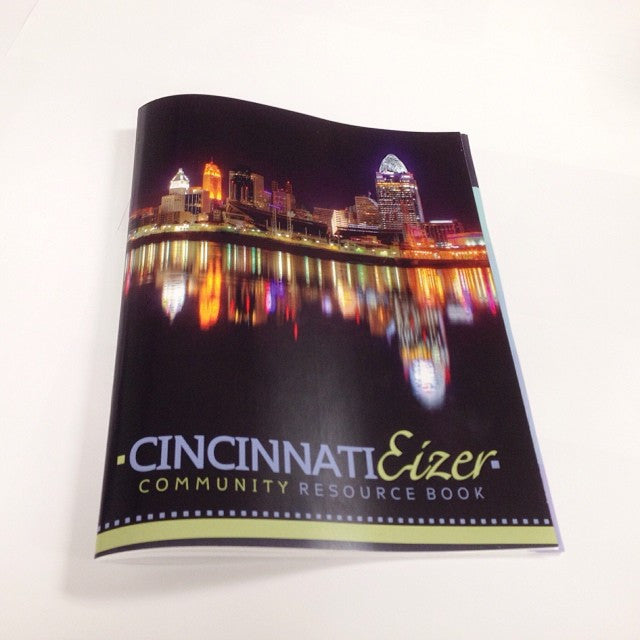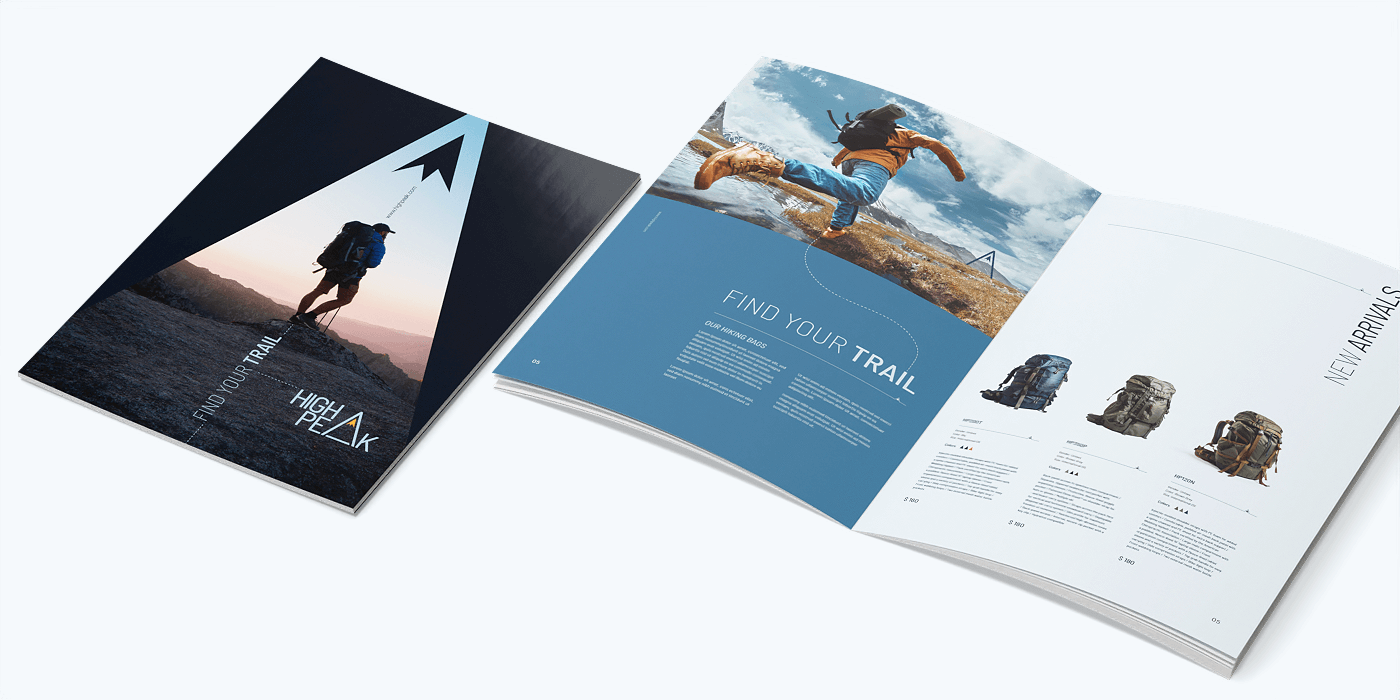The Necessary Guide to Comprehending Pamphlet Printing Options and Techniques
The procedure of brochure printing includes multiple factors to consider that can substantially influence the end product. From selecting the appropriate layout and size to understanding the subtleties of binding approaches, each choice plays a crucial duty. Furthermore, elements such as paper supply and printing methods more affect the performance of the booklet. As one browses these choices, it becomes vital to grasp just how they adjoin and what that implies for the overall outcome.
Recognizing Booklet Dimensions and styles
When taking into consideration brochure printing, understanding the numerous formats and dimensions available is crucial for accomplishing the desired discussion. Pamphlets can be created in countless formats, including saddle-stitched, spiral-bound, and perfect-bound, each offering distinctive advantages. Typical dimensions range from common letter (8.5 x 11 inches) to smaller sized options like A5 (5.8 x 8.3 inches), enabling for flexibility based upon web content and target audience.Selecting the ideal size can affect both the layout and viewers interaction. Bigger sizes might fit aesthetically driven content, while smaller formats may be much more straightforward and portable. In addition, the number of web pages affects the selection of binding approach, as thicker pamphlets might call for sturdier bindings. Eventually, comprehending these aspects permits an extra tailored approach, making sure that the end product lines up with the designated message and visual, enhancing the total effectiveness of the interaction.
Picking the Right Paper Supply

Binding Methods: Factors To Consider and alternatives
When it comes to binding techniques for booklets, numerous choices are readily available, each with unique benefits. Saddle stitch binding uses a cost-efficient remedy for thinner pamphlets, while perfect binding techniques supply an even more sleek look for thicker magazines. Wire-O binding stands out for its sturdiness and convenience of use, making it perfect for papers that need adaptability.
Saddle Stitch Binding
Saddle stitch binding supplies a affordable and useful service for constructing booklets, making it a prominent choice among publishers and services. This binding approach includes folding sheets of paper in half and stapling them along the fold line, creating a organized and neat look. Typically suitable for booklets with a reduced web page count, saddle stitching is perfect for magazines, pamphlets, and training materials. The simpleness of this strategy permits fast manufacturing and is typically favored for short runs or advertising things. Nevertheless, it is important to keep in mind that saddle stitch binding might not appropriate for thicker brochures, as the spine might not hold up under increased weight. On the whole, it stays a trustworthy option for numerous printing projects.
Perfect Binding Strategies
Perfect binding is a widely made use of technique that gives a specialist and refined finish to magazines and pamphlets. This approach entails gluing the pages together at the back using a strong adhesive, permitting a clean side and the capability to hold a bigger number of pages contrasted to saddle sewing. Perfect binding is particularly appropriate for thicker pamphlets, such as brochures and annual reports, where a tough, level spinal column is wanted. Furthermore, it offers the choice for a printed cover that can be created to boost visual charm. Factors to consider such as page count, paper weight, and the meant usage of the brochure need to be taken into account, as they can impact longevity and overall quality.
Wire-O Binding Options
Wire-O binding, known for its durability and versatility, uses an exceptional alternative for pamphlets that call for simple web page transforming and an expert appearance. This binding technique utilizes a series of metal loops that hold pages securely, allowing them to exist level when open. It is specifically ideal for directories, presentations, and manuals due to its robust nature. Wire-O binding is offered in various colors and sizes, suiting different web page matters and thicknesses. Furthermore, it allows the inclusion of covers and tabs, boosting the brochure's overall visual. Considerations for Wire-O binding consist of the choice of cable shade, the dimension of the loops, and the extent of customization wanted, all of which can greatly influence the last item's look and capability.
Digital vs. Offset Printing: Which Is Best for You?
When selecting a printing method for pamphlets, understanding the distinctions between electronic and balance out printing is important. Digital printing makes use of contemporary technology to generate top notch prints rapidly and cost effectively, making it optimal for short runs or tasks needing quick turnaround times. It permits for modification, supplying the capacity to publish on-demand with marginal waste.In comparison, counter printing is a typical approach that stands out in producing big amounts with consistent top quality. It entails moving ink from a plate to a rubber blanket, then to the paper, which results in exact information and vibrant shades. Nonetheless, offset printing commonly requires longer configuration times and is extra cost-efficient for larger volumes.Ultimately, the choice between electronic and offset printing relies on job needs, budget, and desired quantity. For tiny, time-sensitive tasks, electronic could be the very best selection, while offset may be preferable for bigger, premium productions.

Designing Your Booklet: Tips and Best Practices
When designing a these details booklet, mindful interest to layout, typeface selection, and shade use can greatly boost its performance. A well-structured design overviews the visitor's eye, while ideal fonts guarantee readability and communicate the wanted tone. Furthermore, effective use shade can evoke emotions and highlight key info, making the overall design extra impactful.
Selecting the Right Layout
Just how can one efficiently pick the appropriate design for a booklet? Initially, it is vital to evaluate the pamphlet's purpose and target audience. A clean, organized layout improves readability and involvement. Using a grid system can assist in lining up aspects continually, developing an expert look. Furthermore, including visual power structure with varying dimensions and placements of pictures and message can guide the visitor's eye and highlight key info. It is additionally vital to leave adequate white room, which avoids congestion and permits much better emphasis. Checking different formats with mock-ups can supply understanding right into just how the style does in real-world scenarios, guaranteeing that the final item meets both aesthetic and practical demands.
Selecting Suitable Font Styles
A well-chosen font style can considerably boost the overall design of a booklet, complementing the format and enhancing the web content's message. The selection of font styles ought to consider readability, especially for body text, as it assures the details comes to all viewers. Sans-serif fonts are usually liked for digital styles, while serif font styles can provide a traditional feeling in published materials. It's recommended to limit font selections to 2 or 3 to maintain aesthetic coherence. Additionally, typeface dimension plays an important duty; headings must be unique but not frustrating, while body message must be comfortable for analysis. When choosing fonts, positioning with the brochure's style and target audience is important for reliable interaction and aesthetic appeal.
Reliable Use Shade
Color functions as a powerful device in booklet layout, forming assumptions and directing viewers emotions. It can evoke sensations of trust, enjoyment, or calmness, depending on the colors picked. Designers ought to take into consideration shade theory principles, making sure that the chosen combination straightens with the booklet's message and target audience. Using warm colors like red and orange can develop urgency, while cooler tones like blue and green foster tranquility.Additionally, contrast plays an important function; complementary shades can improve readability and aesthetic allure. Uniformity in shade use throughout web pages further strengthens brand name identity and cohesion. Eventually, effective color execution not just catches interest but also enhances the pamphlet's objective, making it a crucial facet of effective style.
Completing Touches: Coatings and Special Impacts
While numerous consider the content and format of a pamphlet the most important aspects, the completing touches, such as coverings and unique results, play a necessary function in improving its overall appeal. Coatings can supply defense and resilience, guaranteeing that the booklet endures wear and tear. Matte coatings use an advanced, non-reflective surface area, while shiny coverings can the original source make shades show up more distinctive and dynamic. Unique impacts, like embossing or foil marking, include a responsive measurement that can create a memorable impression. These techniques can highlight specific locations, attracting interest to crucial details or creating visual passion. In addition, UV finish can supply a high-shine surface that raises the general look.Together, these finishing touches not just improve the booklet's visual however likewise connect expertise and attention to information, inevitably leaving a long lasting influence on the reader.
Cost Factors To Consider for Brochure Printing
Understanding the numerous expense considerations for pamphlet printing is crucial for companies and companies intending to enhance their budget plans. Key elements influencing expenses consist of the choice of paper, ink, and binding approaches. Better materials, such as superior paper or specialized inks, usually increase the general cost. Furthermore, the dimension and page click now matter of the brochure play a substantial role; larger booklets require more resources and time to produce.Another important consideration is the printing technique, whether digital or offset, as each has its own pricing structure and viability for various amounts. Organizations need to additionally consider layout expenses, which can vary based on complexity and the usage of expert services. Ultimately, delivery and handling charges can include in the overall, especially for large orders. By evaluating these elements, companies can make enlightened choices that straighten with their monetary abilities while achieving the wanted top quality in their published products.
Frequently Asked Questions
What Are the Environmental Impacts of Brochure Printing?
The environmental impacts of pamphlet printing include deforestation from paper manufacturing, carbon discharges from transportation, and waste generation from thrown out products - Booklet Printing. Sustainable practices, such as making use of recycled paper and green inks, can alleviate these effects
Just How Can I Ensure Shade Accuracy in My Pamphlet?
To guarantee color accuracy in a pamphlet, one ought to utilize adjusted screens, employ specialist color accounts, conduct test prints, and choose top notch printing services that provide shade matching and proofing options for finest results.
What Is the Typical Turn-around Time for Booklet Printing?
The normal turnaround time for brochure printing differs relying on the complexity and amount - Booklet Printing. Typically, it varies from a few days to 2 weeks, affected by elements such as printing techniques and finishing demands
Exist Minimum Order Quantities for Booklet Printing?

Can I Publish Pamphlets in Numerous Languages?
Printing brochures in numerous languages is feasible. Several printing solutions offer alternatives for bilingual or multilingual designs, enabling for effective communication. Cautious planning assurances that develop components suit numerous languages without compromising readability or appearances. Additionally, variables such as paper stock and printing techniques further influence the effectiveness of the pamphlet. When taking into consideration brochure printing, comprehending the various formats and dimensions readily available is crucial for attaining the preferred presentation. When picking a printing approach for brochures, comprehending the differences between electronic and counter printing is essential. In addition, the dimension and page count of the brochure play a significant duty; bigger booklets call for even more resources and time to produce.Another important factor to consider is the printing method, whether electronic or balanced out, as each has its own rates framework and suitability for various quantities. The environmental impacts of booklet printing include logging from paper production, carbon exhausts from transportation, and waste generation from discarded materials.
Comments on “How to Use Booklet Printing to Boost Customer Engagement in 2025”